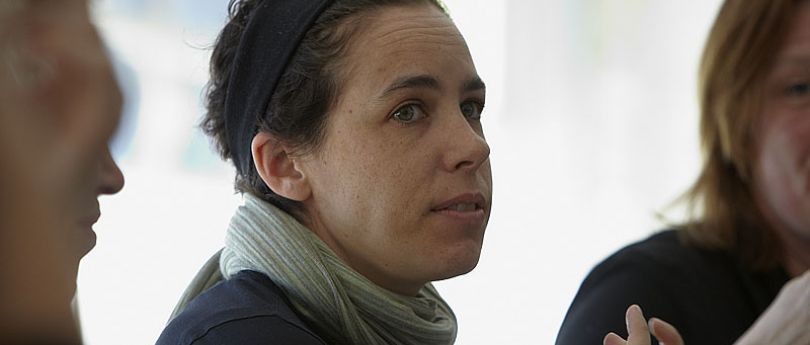Kennis /
De evolutie van toegang tot informatie

Caitlin Jones, april 2009
— Annet Dekker interviewed Caitlin Jones on her own archiving research and her stay in The Netherlands for the Virtueel Platform Visitor Programme
AD: Can you describe your background?
CJ:
My background is in Art History and Archival Studies. As a student in
Art History I was primarily interested in Contemporary Art, film and
photography. From my interest in film grew an interest in preservation
and archival strategies for film and video. After working in a number of
small galleries and artist run centers in Canada, I was offered the
Daniel Langlois Fellowship in Variable Media Preservation at the Solomon
R. Guggenheim Museum, which is what put me on my current path.
AD: What got you interested in documentation strategies?
CJ:
My interest in documentation strategies grew from my work with the
Variable Media Network. Something that kept coming up over and over
again when we talked about the conservation of ephemeral art forms was
the need to document all the different iterations of a work. From the
differences and similarities that could be seen in different versions of
the same work, we could help to identify core elements of an art work.
How
these documents were created then became an important part of my
research: what documents should we collect, from whom, for what purpose,
how (and who) do we access them, and who's perspective (documents)
should we priviledge, are the research questions I'm interested in now.
AD: How did the research you attended (inside movement knowledge) fit into this?
CJ:
It was incredibly interesting to see another field grappling with the
same issues, but more interesting were the differences. For example, the
way that dancers and choreographers describe their field, is by it's
very nature, a more physical description than in contemporary art. Often
an important point would be illustrated with a physical action (that
made the point much more clear) -- and this should be captured in any
dance documentation process.
My attendance at IMK gave me a lot to think about - both about my previous work, and the work I hope to do in the future.
AD:
With ever new (media) technologies methods for archiving and
documentation become more important, how do you see this field evolving
in the future?
CJ: Hopefully we will see an evolution in
terms of access to information. I recognize that a lot of issues of
access are currently due to privacy, copy right and other digital rights
management issues, but it would be nice to have increased access to
information. And along the same vein, it would be great to develop a
system that could link a number of existing projects together. One of
the main problems that I see is that there are numerous different
documentation projects going on around the world, and despite best
attempts, they all exist independently of each other. It would be a huge
development in the field to have a way to access information from all
of these projects from a central location.
AD: Could new
communication structures, for example web2.0 strategies, play a role in
documentation (influence of oral history / visualisation techniques)?
CJ:
I think that Web 2.0 can offer a lot to the field of documentation. For
my case-study (with Lizzie Muller and the Daniel Langlois Foundation)
on David Rokeby's "Giver of Names", we created a widget that
automatically searched sites like Flickr and YouTube for keywords
related to this specific work. This way, you are getting a wide variety
of perspectives (museum, curator, viewer, etc) of a work. The main
problem with this however is that you then are reliant upon people
tagging their photographs and videos appropriately.
